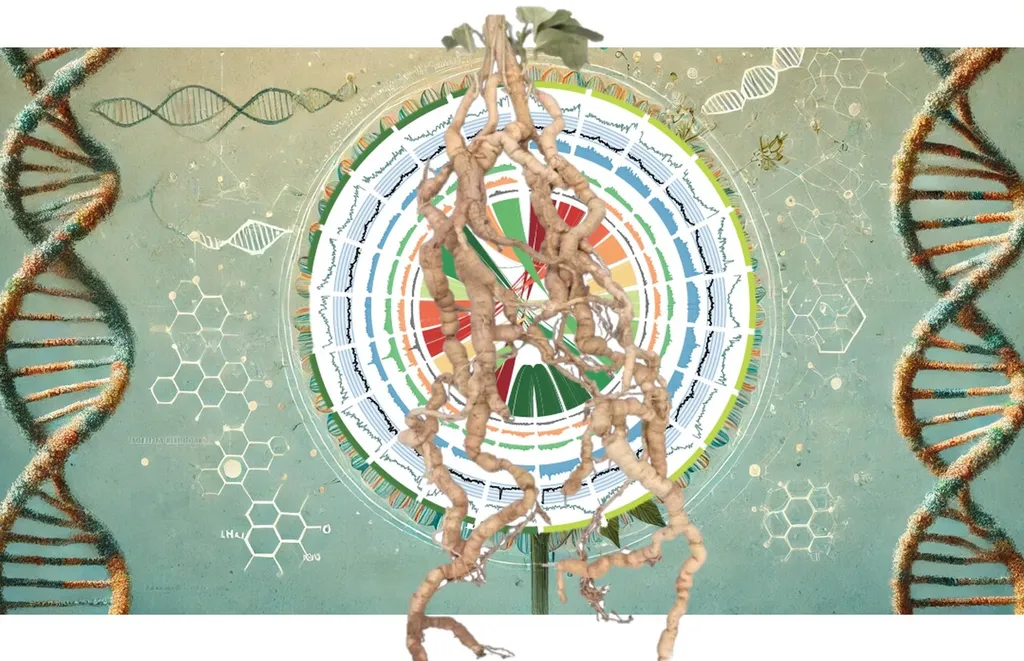In the lush landscapes of ethnomedicine, a new scientific breakthrough is making waves, offering a glimpse into the genetic blueprint of a revered medicinal herb. Researchers have successfully sequenced the complete chloroplast genome of Pothos chinensis, a plant deeply rooted in Yao ethnomedicine, and the findings could have significant implications for agriculture and biotechnology.
Pothos chinensis, known for its medicinal properties, has been a staple in traditional Yao medicine. However, until now, its genetic makeup remained largely unexplored. The study, led by Qiaomei Cai from the College of Biology and Food Engineering at Guangxi Science & Technology Normal University, has unveiled the plant’s chloroplast genome, which is 163,354 base pairs in length. This genome exhibits a typical quadripartite structure, including a large single-copy region, a small single-copy region, and a pair of inverted repeat regions.
The genome contains 128 genes, including 86 protein-coding genes, 36 tRNA genes, and 6 rRNA genes. This detailed genetic map provides a foundation for understanding the plant’s evolutionary history and its relationship with other species in the Araceae family. “This genome sequence is a crucial step in unraveling the genetic secrets of Pothos chinensis,” said Cai. “It opens up new avenues for research and potential applications in agriculture and medicine.”
One of the most intriguing aspects of this research is its potential to enhance the agricultural sector. By understanding the genetic makeup of Pothos chinensis, scientists can develop more effective breeding programs, improve crop yields, and enhance the plant’s medicinal properties. This could lead to the cultivation of more potent and sustainable medicinal plants, benefiting both farmers and consumers.
The study also sheds light on the evolutionary relationships within the Araceae family. Phylogenomic analysis of 15 species indicates that P. chinensis is most closely related to species of the genus Anthurium. This information is invaluable for understanding the plant’s evolutionary history and its potential for adaptation to different environments.
The research, published in ‘Mitochondrial DNA. Part B. Resources’, not only advances our knowledge of Pothos chinensis but also highlights the importance of ethnomedicine in modern scientific research. As Cai noted, “This study is a testament to the value of traditional knowledge in guiding modern scientific inquiry.”
The implications of this research extend beyond the immediate findings. By providing a detailed genetic map of Pothos chinensis, scientists can explore its potential for biotechnological applications, such as the production of valuable compounds for pharmaceuticals and agriculture. This could lead to the development of new drugs and biofertilizers, further enhancing the plant’s commercial value.
In conclusion, the sequencing of the Pothos chinensis chloroplast genome is a significant milestone in the field of ethnomedicine and agricultural biotechnology. It offers a wealth of information that can be leveraged to improve crop yields, develop new medicinal compounds, and understand the plant’s evolutionary history. As we continue to explore the genetic diversity of medicinal plants, we unlock new possibilities for sustainable agriculture and improved human health.

